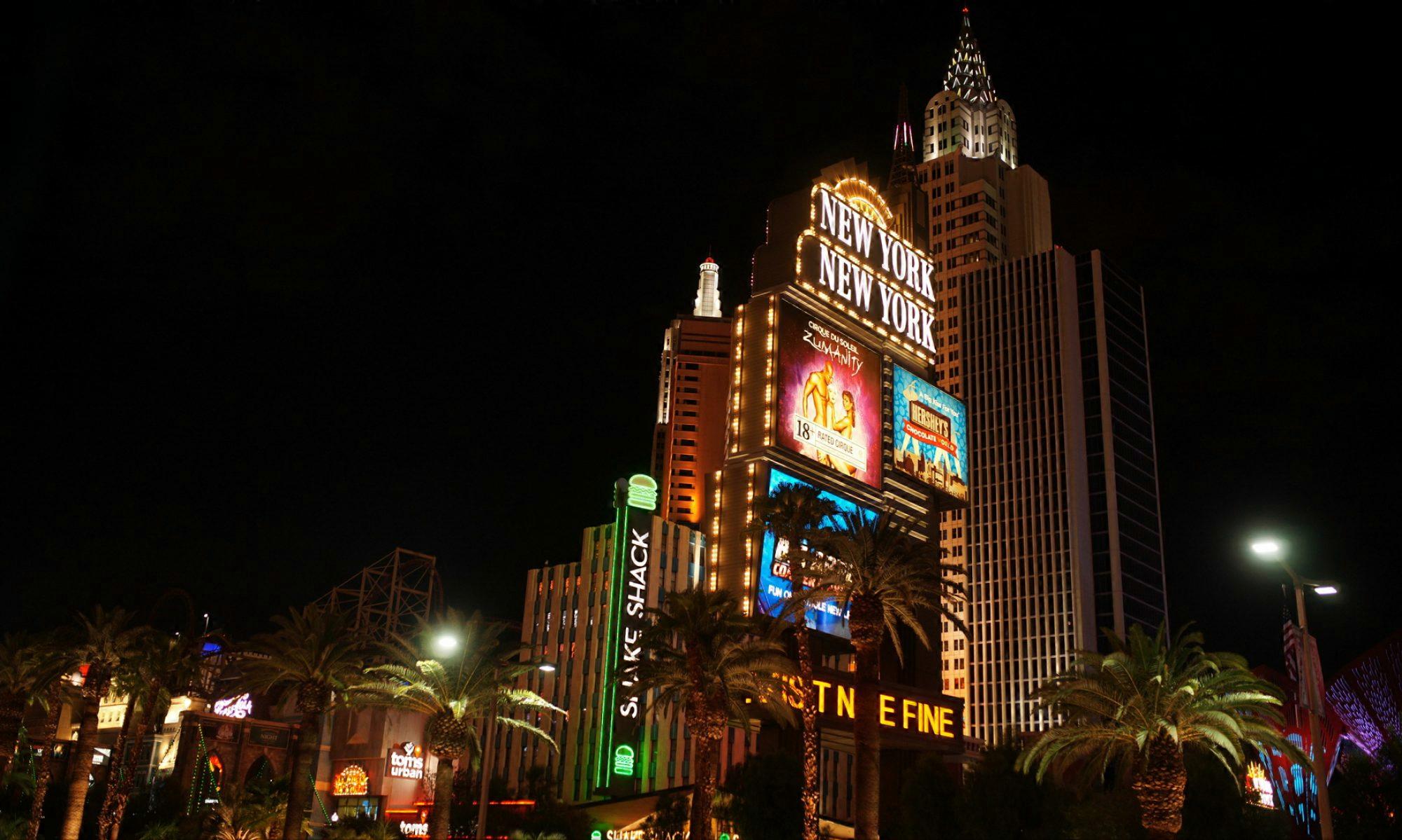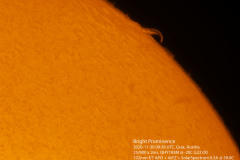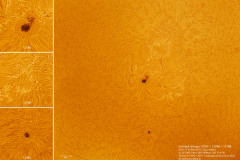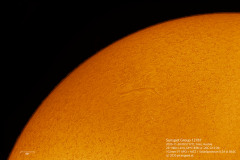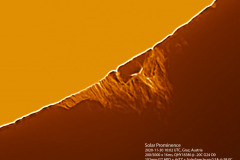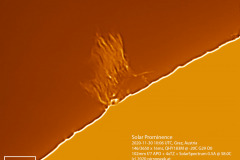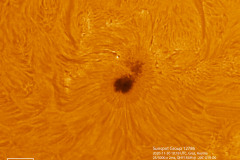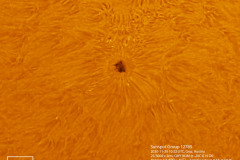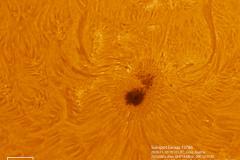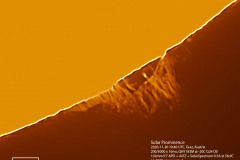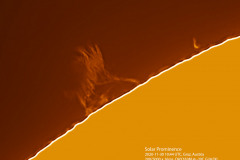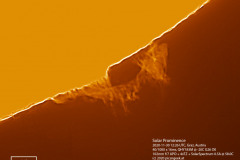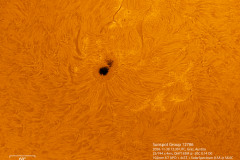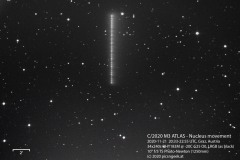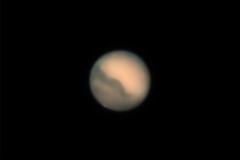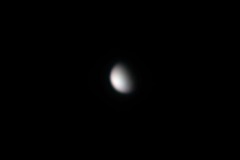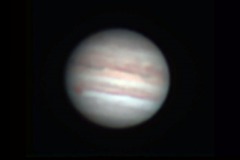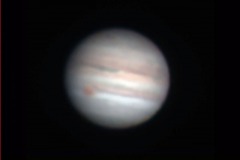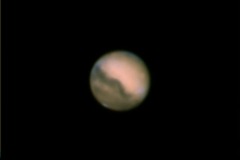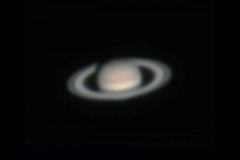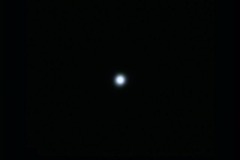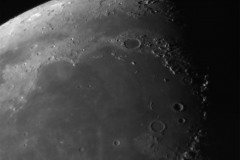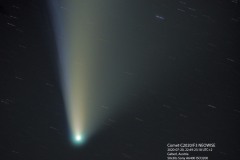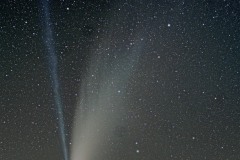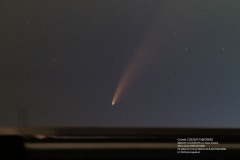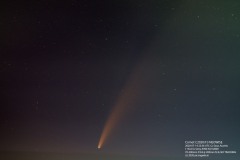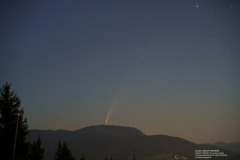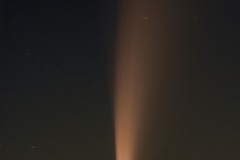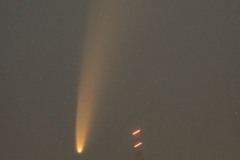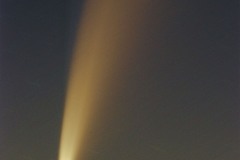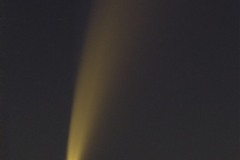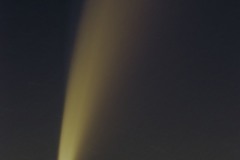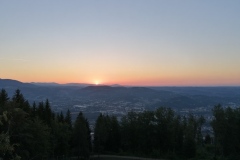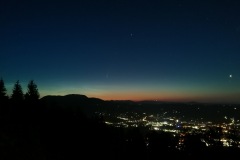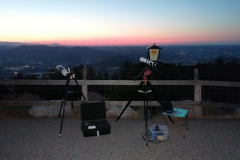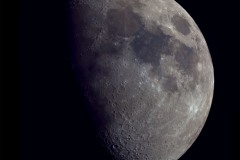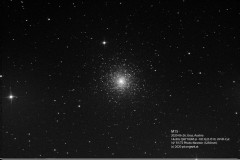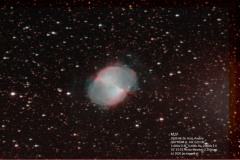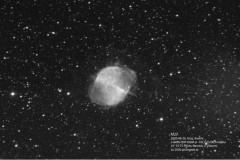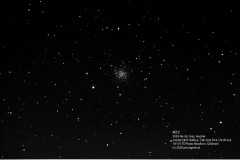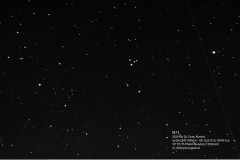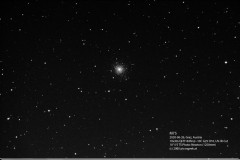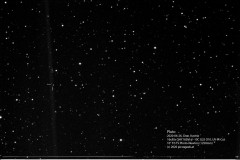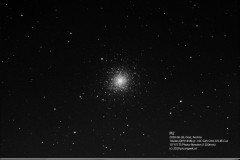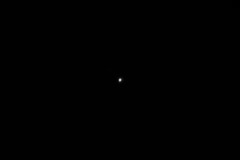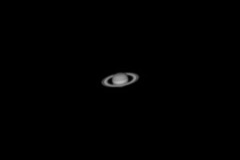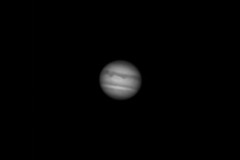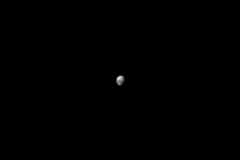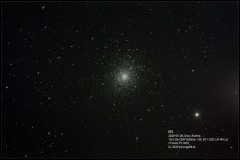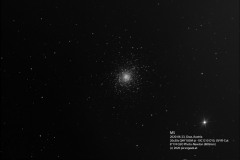Again a series of images of the currently active regions of the sun. All images taken in the mid-morning of 2020-11-30.
Unfortunately, these will be the last images for several days, as a persistent cloud system arrived that day…
Satellite transits Mars
On Thursday 2020-10-22 in the evening, I captured image sequences of Mars (see seperate post). During one of the infrared test sequences (I wanted to compare noise levels at +2C vs. -20C) I saw a brief dark shadow passing the disk of Mars. First out, I thought it might have been a bat. But later on, when I analyzed the video, I found out, that the shadow was a satellite transiting Mars 🙂
The transit started at 2020-10-22 18:27:45.498 UT. The satellite left the disk of Mars at 18:27:45.687. So the duration was a very brief 190 Milliseconds! As I recorded with 178 frames/second, I could capture 27 individual images of the transit.
I definitively was very lucky to have registered the shadow during capture time. Otherwise I would never have seen this event in post processing…
Optics used: 10″ f/5 Newton with 2.5x Barlow (effective focal length was 3125mm)
Recorded with IR-650nm pass filter on QHY183M camera at +2C with 178 fps
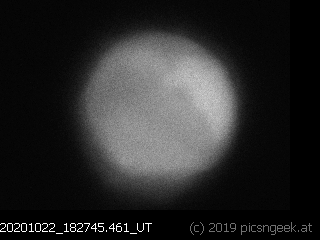
Comet C/2020 M3 ATLAS – Nucleus movement
Saturday night (2020-11-21) I recorded LRGB data of comet C/2020 M3 ATLAS. Upon inspecting the image data, I detected a spinning movement of the comets nucleus. To show the movement, I combined the 34 individual LRGB images (240 seconds each) to one stack with the comet forming a curving trail.
During the course of 142 minutes, the comet moved 470 arcseconds (3.3 arcseconds per second).
Mars in opposition and (almost) all other planets
Finally, in the evening of 2020-10-08, there came a cloud free night with the moon rising not too early. Although the seeing conditions were not really faborable (high jet stream speed and rather bad layers), I had to go planet hunting.
Jupiter and Saturn were rather low, but still well placed from my home location. Mars was already well up in the sky when night fell. Inbetween there were Neptune and Uranus. Both of them not quite spectacular with persisting seeing conditions.
And finally I took a shot of the beautifully lit mountains on the Moon. The picture shows Montes Apenninus at the lower right, Montes Caucasus to the right (almost lost in the shadow) and Montes Alpes around Mare Imbrium. (North is up)
This time, I used my 10″ f/5 Newtonian with a 2.5x Barlow lens, to test oversampling capabilities. Well… The seeing conditions would rather call for no barlow at all, but I had to test the combo 🙂
All images are created from 4 separate, RGB+IR filtered video (SER) files with QHY183M camera. Each video consists of 500-10000 individual frames, from which 6-10% of the best were stacked.
The resulting resolution is 0.158 arc-seconds per pixel, which is a 3x oversampling of the 10″ scope (0.464 arc-seconds Dawes limit); Except the Moon, which is scaled to 33%
See the results processed AutoStakkert!3, Registax and Photoshop here:
Comet C2020/F3 NEOWISE Update
Finally, after a couple of days, clouds did break up for an unobstructed view of comet C2020/F3 NEOWISE. This time, I left the city area for a quite dark spot (21.3mpss / Bortle 4) at 1600m above sea level. At around 11pm, the comet got clearly visible with naked eye. With binoculars, the comets tail got some structure.
While my cameras did collect images, there was enough time to marvel on the summer milky way and several of the treasures in constellations Sagittarius and Eagle (Lagoon nebula, Eagle nebula, Butterfly cluster, Trifid nebula, …)
As a bonus, there have been lots of meteors to enjoy!
Comet C2020/F3 NEOWISE already visible in the evening!
Yesterday night, before going to bed, I took a brief look at the night sky. Fortunately, the forecast clouds did not yet appear. So I took my binoculars and went up to the top most window of my condo’s stair case, which is facing north.
I could not spot the comet with my bare eyes. Though with binoculars, the comet was a pleasant sight, even though it was low in the suburban light polluted sky. At this moment, the comet was a mere 5.5 degrees above the horizon.
So I rushed back down the stairs and grabbed my camera and a tripod. I intentionally did not use one of my tracking mounts, as I expected the comet to reach the adjacent roof top within a short period of time.
Within a few minutes I could capture a set of images to process. Here are the results, all captured with Sony A99-ii and 70-200mm/f2.8 tele lens at 200mm:
It is obvious that the 30x4s ISO1600 exposures are far better in noise than the 115×2.5s ISO12800 exposures. Apart from that (ignore the color cast and gradients, which result from bad calibration data), a lot of information may be pulled from the stacked images.
Comet C2020 F3 NEOWISE
This years best view of a comet has finally been visible in my region. Weather conditions have been really favorable for a night time spectacle.
Combined with the setting across my home town Graz, viewing from top of Plabutsch (located at the eastern edge of Graz) permitted the comet to rise exactly next to the 2 antennas on the mountain top of Schöckl in 14km distance.
See how remarkably bright the comet is in the wider angle image below. This image was taken with a mobile phone camera! And the comet is clearly visible!
The timelapse video shows the comet rising at 02:38 CEST until mid of nautic twilight at 03:54 CEST. See the amazing pattern of the noctilucent clouds going in waves!
High contrast moon image
One night of Messier and Planet hunting at home
My limited view from the balcony is not the best for astronomy. I have approximately 120 degree east to west, facing south-east across the city. The maximum altitude i may see stars with the telescope is 74 degrees. Objects positioned low in the sky are blocked by the adjacent building up to 25 degrees. So I have access to only a smaller part of the sky, with typical Bortle 5-6 visibility.
Even though conditions seem to be unfavorable to setup a telescope…
– at times, I have all the planets in view
– the moon is a wonderful sight, even though the air above the city is far from stable
– several deep sky beauties come into view almost year round
– using light pollution filters work really well under these conditions
– I may view or image every night (time and weather permitting) without the hazzle of packing, driving an hour to one of the next darker sites, setting up, …
To proof that the night sky has still a lot to offer in light polluted urban places, I collected the images below in one single night, within less than 4 hours:
M5 globular cluster in different exposure settings
Speed of optics and exposure times have a great impact on the resulting image. Even though a higher quantity of individual exposures may improve the result, the total amount of photons collected is key.
The 715mm f/7 APO is significantly slower than the 800mm f/4 photo newton, the total capture time of 600s vs 1560s produces a significantly better result:
